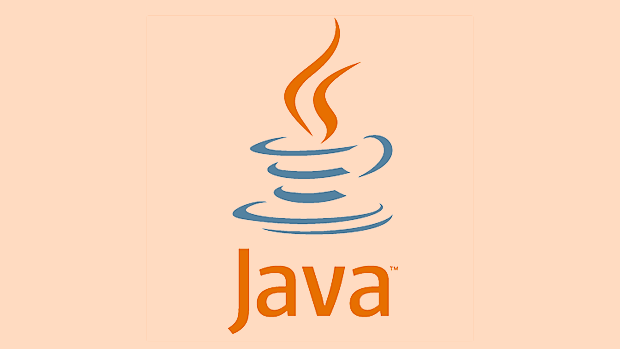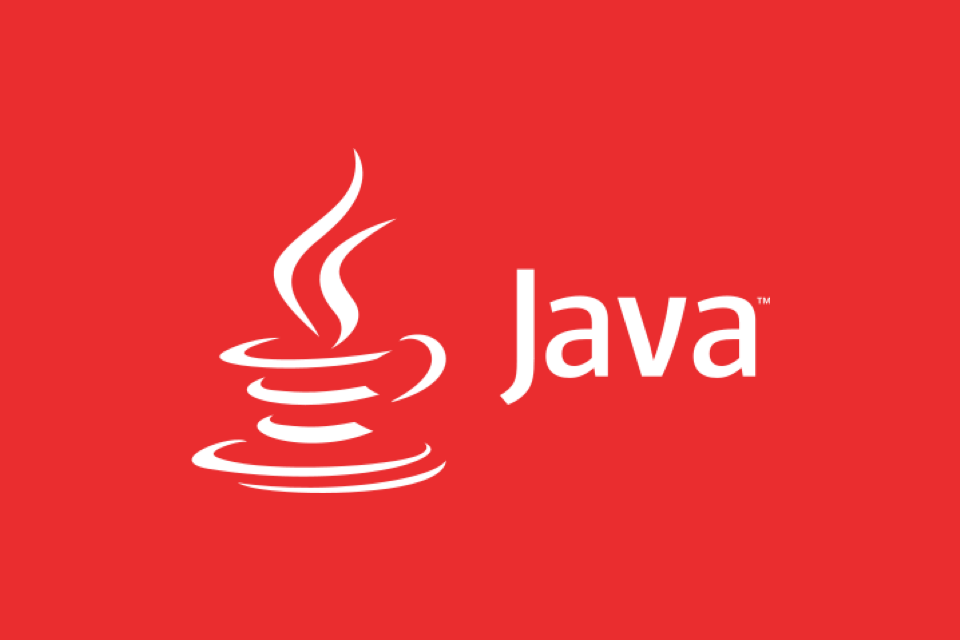Guava remains valuable for modern Java developers by providing immutable collections like ImmutableList and ImmutableSet, which ensure thread safety and prevent accidental modifications. 2. It offers practical utilities such as Preconditions for clean input validation, Objects.equal() for null-safe comparisons, and toStringHelper for readable toString() implementations. 3. Guava introduces advanced collection types including Multimap for one-to-many mappings, BiMap for bidirectional mappings, and Table for two-dimensional data storage. 4. While its functional programming support (Function, Predicate, Optional) is largely superseded by Java 8 features, legacy methods like Iterables.filter() remain useful in non-stream contexts. 5. CacheBuilder enables simple in-memory caching without external dependencies, suitable for lightweight use cases, though Caffeine is preferred for high-performance scenarios. Use Guava selectively for its superior collection utilities and avoid outdated components like Guava’s Optional in favor of standard Java equivalents to write cleaner, safer code.

If you're a modern Java developer working with JDK 8 or later, Google Guava isn’t just a nice-to-have—it’s a productivity booster that fills gaps in the standard Java library. While newer Java versions have absorbed some of Guava’s early innovations (like Optional), the library still offers powerful utilities and data structures that make code cleaner, safer, and more expressive.

Here’s a practical guide to the most valuable parts of Guava for today’s Java developers.
1. Immutable Collections: Safety and Clarity
One of Guava’s standout features is its support for immutable collections. These are collections that can’t be modified after creation—ideal for defensive programming, thread safety, and clear API contracts.

Instead of this:
List<String> list = new ArrayList<>();
list.add("apple");
list.add("banana");
// Then manually wrap or document that it shouldn't be modifiedUse Guava:

ImmutableList<String> fruits = ImmutableList.of("apple", "banana", "orange");
ImmutableList<String> copy = ImmutableList.copyOf(fruits);You can also build more complex ones:
ImmutableSet<String> unique = ImmutableSet.<String>builder()
.add("a")
.add("b")
.addAll(otherCollection)
.build();Why it matters:
- Prevents accidental modifications
- Thread-safe by design
- Expresses intent clearly: “this won’t change”
Note: Java 9 has
List.of()and similar, but Guava’s builders and flexibility (e.g.,ImmutableSortedSet,ImmutableBiMap) still go further.
2. Common Utilities That Save Repetitive Code
Guava packs helpers that reduce boilerplate across common tasks.
Preconditions – Clean Input Validation
Replace null checks and validation clutter with Preconditions:
public void setUser(String name, Integer age) {
checkNotNull(name, "Name cannot be null");
checkArgument(age != null && age > 0, "Age must be positive");
checkState(users.size() < MAX_USERS, "User limit reached");
// Proceed safely
}checkNotNull→ throwsNullPointerExceptioncheckArgument→ throwsIllegalArgumentExceptioncheckState→ throwsIllegalStateException
Clean, readable, and consistent.
Objects.equal() and Objects.toStringHelper()
Even with Java 8 , these help before Objects class caught up:
if (Objects.equal(a, b)) { ... } // Handles nulls safelyAnd for quick toString():
@Override
public String toString() {
return MoreObjects.toStringHelper(this)
.add("name", name)
.add("age", age)
.toString();
}Note:
MoreObjects.toStringHelperis now deprecated in favor ofObjects.toStringHelperin newer Guava versions—shows how Guava influenced the JDK.
3. Powerful Collection Types You Won’t Find in JDK
Guava adds high-level collection types that solve real-world modeling problems.
Multimap – One Key, Multiple Values
Instead of Map<String, List<String>>, use:
Multimap<String, String> favorites = ArrayListMultimap.create();
favorites.put("Ann", "pizza");
favorites.put("Ann", "pasta");
favorites.put("Bob", "sushi");
for (String food : favorites.get("Ann")) { // auto-list created
System.out.println(food);
}No more null checks or manual list creation.
BiMap – Bidirectional Mapping
Ensures both key and value are unique—so you can lookup by key or by value:
BiMap<String, String> countryCodeToName = HashBiMap.create();
countryCodeToName.put("US", "United States");
countryCodeToName.put("CA", "Canada");
// Reverse lookup
String code = countryCodeToName.inverse().get("Canada"); // → "CA"Perfect for enums, config mappings, or language codes.
Table – Two-Dimensional Mapping
Need a matrix? Use Table:
Table<String, String, Integer> performance = HashBasedTable.create();
performance.put("Q1", "Mobile", 120);
performance.put("Q1", "Desktop", 200);
Integer value = performance.get("Q1", "Mobile"); // → 120Think: rows, columns, and values—like a spreadsheet.
4. Functional Programming Support (Legacy, but Still Useful)
Guava predates Java 8 streams and lambdas, so it introduced Function, Predicate, and Optional. While you should prefer Java 8 constructs now, you’ll still see these in older codebases.
Instead of:
Function<String, Integer> strToInt = new Function<String, Integer>() {
public Integer apply(String s) { return Integer.valueOf(s); }
};Just use a lambda:
Function<String, Integer> strToInt = Integer::valueOf;
But Guava’s Optional was influential. Now use java.util.Optional instead—Guava’s version is discouraged to avoid confusion.
Still, Guava’s Iterables and Iterators have useful methods:
Iterable<String> filtered = Iterables.filter(names, name -> name.startsWith("A"));
String first = Iterables.getFirst(filtered, "default");These work well with legacy collections or when streams aren’t available.
5. Caching: Simple In-Memory Caching (Without Spring)
For lightweight caching without pulling in Spring or Caffeine (which actually evolved from Guava!), use CacheBuilder:
LoadingCache<String, User> cache = CacheBuilder.newBuilder()
.maximumSize(1000)
.expireAfterWrite(10, TimeUnit.MINUTES)
.build(
new CacheLoader<String, User>() {
public User load(String key) throws Exception {
return fetchUserFromDatabase(key);
}
});
User user = cache.get("alice123"); // Loads if not presentNote: Guava Cache is still solid for simple cases, but for heavy use, consider Caffeine—it’s faster and more actively developed.
Final Thoughts
Guava isn’t what it used to be—Java has caught up in many areas. But it’s far from obsolete.
Use Guava when you want:
- Immutable collections with rich builders
- Specialized data structures (
Multimap,BiMap,Table) - Clean utilities like
PreconditionsandObjects.equal - Lightweight caching (or learning stepping stone to Caffeine)
Avoid:
- Guava’s
Optional,Function,Predicate— preferjava.utiland lambdas - Overusing legacy functional types in new code
Add it to your project with Maven:
<dependency> <groupId>com.google.guava</groupId> <artifactId>guava</artifactId> <version>32.1.3-jre</version> </dependency>
Keep it in your toolkit—not for everything, but for the gaps Java still leaves open.
Basically, use the right part of Guava, ignore the outdated bits, and write cleaner, safer Java.
The above is the detailed content of A Guide to Google Guava for Modern Java Developers. For more information, please follow other related articles on the PHP Chinese website!

Hot AI Tools

Undress AI Tool
Undress images for free

Undresser.AI Undress
AI-powered app for creating realistic nude photos

AI Clothes Remover
Online AI tool for removing clothes from photos.

Clothoff.io
AI clothes remover

Video Face Swap
Swap faces in any video effortlessly with our completely free AI face swap tool!

Hot Article

Hot Tools

Notepad++7.3.1
Easy-to-use and free code editor

SublimeText3 Chinese version
Chinese version, very easy to use

Zend Studio 13.0.1
Powerful PHP integrated development environment

Dreamweaver CS6
Visual web development tools

SublimeText3 Mac version
God-level code editing software (SublimeText3)
 Asynchronous Programming Techniques in Modern Java
Jul 07, 2025 am 02:24 AM
Asynchronous Programming Techniques in Modern Java
Jul 07, 2025 am 02:24 AM
Java supports asynchronous programming including the use of CompletableFuture, responsive streams (such as ProjectReactor), and virtual threads in Java19. 1.CompletableFuture improves code readability and maintenance through chain calls, and supports task orchestration and exception handling; 2. ProjectReactor provides Mono and Flux types to implement responsive programming, with backpressure mechanism and rich operators; 3. Virtual threads reduce concurrency costs, are suitable for I/O-intensive tasks, and are lighter and easier to expand than traditional platform threads. Each method has applicable scenarios, and appropriate tools should be selected according to your needs and mixed models should be avoided to maintain simplicity
 Best Practices for Using Enums in Java
Jul 07, 2025 am 02:35 AM
Best Practices for Using Enums in Java
Jul 07, 2025 am 02:35 AM
In Java, enums are suitable for representing fixed constant sets. Best practices include: 1. Use enum to represent fixed state or options to improve type safety and readability; 2. Add properties and methods to enums to enhance flexibility, such as defining fields, constructors, helper methods, etc.; 3. Use EnumMap and EnumSet to improve performance and type safety because they are more efficient based on arrays; 4. Avoid abuse of enums, such as dynamic values, frequent changes or complex logic scenarios, which should be replaced by other methods. Correct use of enum can improve code quality and reduce errors, but you need to pay attention to its applicable boundaries.
 Understanding Java NIO and Its Advantages
Jul 08, 2025 am 02:55 AM
Understanding Java NIO and Its Advantages
Jul 08, 2025 am 02:55 AM
JavaNIO is a new IOAPI introduced by Java 1.4. 1) is aimed at buffers and channels, 2) contains Buffer, Channel and Selector core components, 3) supports non-blocking mode, and 4) handles concurrent connections more efficiently than traditional IO. Its advantages are reflected in: 1) Non-blocking IO reduces thread overhead, 2) Buffer improves data transmission efficiency, 3) Selector realizes multiplexing, and 4) Memory mapping speeds up file reading and writing. Note when using: 1) The flip/clear operation of the Buffer is easy to be confused, 2) Incomplete data needs to be processed manually without blocking, 3) Selector registration must be canceled in time, 4) NIO is not suitable for all scenarios.
 How Java ClassLoaders Work Internally
Jul 06, 2025 am 02:53 AM
How Java ClassLoaders Work Internally
Jul 06, 2025 am 02:53 AM
Java's class loading mechanism is implemented through ClassLoader, and its core workflow is divided into three stages: loading, linking and initialization. During the loading phase, ClassLoader dynamically reads the bytecode of the class and creates Class objects; links include verifying the correctness of the class, allocating memory to static variables, and parsing symbol references; initialization performs static code blocks and static variable assignments. Class loading adopts the parent delegation model, and prioritizes the parent class loader to find classes, and try Bootstrap, Extension, and ApplicationClassLoader in turn to ensure that the core class library is safe and avoids duplicate loading. Developers can customize ClassLoader, such as URLClassL
 Handling Common Java Exceptions Effectively
Jul 05, 2025 am 02:35 AM
Handling Common Java Exceptions Effectively
Jul 05, 2025 am 02:35 AM
The key to Java exception handling is to distinguish between checked and unchecked exceptions and use try-catch, finally and logging reasonably. 1. Checked exceptions such as IOException need to be forced to handle, which is suitable for expected external problems; 2. Unchecked exceptions such as NullPointerException are usually caused by program logic errors and are runtime errors; 3. When catching exceptions, they should be specific and clear to avoid general capture of Exception; 4. It is recommended to use try-with-resources to automatically close resources to reduce manual cleaning of code; 5. In exception handling, detailed information should be recorded in combination with log frameworks to facilitate later
 How does a HashMap work internally in Java?
Jul 15, 2025 am 03:10 AM
How does a HashMap work internally in Java?
Jul 15, 2025 am 03:10 AM
HashMap implements key-value pair storage through hash tables in Java, and its core lies in quickly positioning data locations. 1. First use the hashCode() method of the key to generate a hash value and convert it into an array index through bit operations; 2. Different objects may generate the same hash value, resulting in conflicts. At this time, the node is mounted in the form of a linked list. After JDK8, the linked list is too long (default length 8) and it will be converted to a red and black tree to improve efficiency; 3. When using a custom class as a key, the equals() and hashCode() methods must be rewritten; 4. HashMap dynamically expands capacity. When the number of elements exceeds the capacity and multiplies by the load factor (default 0.75), expand and rehash; 5. HashMap is not thread-safe, and Concu should be used in multithreaded
 Explained: Java Polymorphism in Object-Oriented Programming
Jul 05, 2025 am 02:52 AM
Explained: Java Polymorphism in Object-Oriented Programming
Jul 05, 2025 am 02:52 AM
Polymorphism is one of the core features of Java object-oriented programming. Its core lies in "one interface, multiple implementations". It implements a unified interface to handle the behavior of different objects through inheritance, method rewriting and upward transformation. 1. Polymorphism allows the parent class to refer to subclass objects, and the corresponding methods are called according to the actual object during runtime; 2. The implementation needs to meet the three conditions of inheritance relationship, method rewriting and upward transformation; 3. It is often used to uniformly handle different subclass objects, collection storage and framework design; 4. When used, only the methods defined by the parent class can be called. New methods added to subclasses need to be transformed downward and accessed, and pay attention to type safety.
 Effective Use of Java Enums and Best Practices
Jul 07, 2025 am 02:43 AM
Effective Use of Java Enums and Best Practices
Jul 07, 2025 am 02:43 AM
Java enumerations not only represent constants, but can also encapsulate behavior, carry data, and implement interfaces. 1. Enumeration is a class used to define fixed instances, such as week and state, which is safer than strings or integers; 2. It can carry data and methods, such as passing values ??through constructors and providing access methods; 3. It can use switch to handle different logics, with clear structure; 4. It can implement interfaces or abstract methods to make differentiated behaviors of different enumeration values; 5. Pay attention to avoid abuse, hard-code comparison, dependence on ordinal values, and reasonably naming and serialization.






